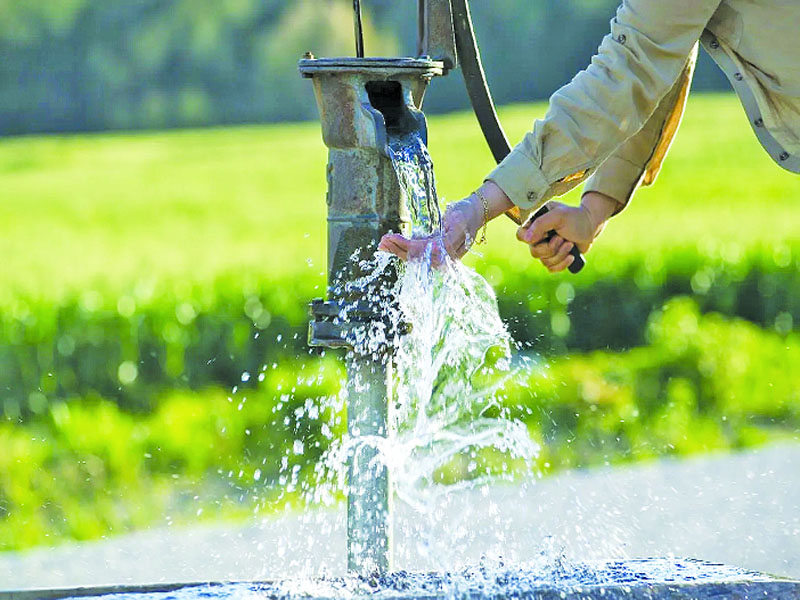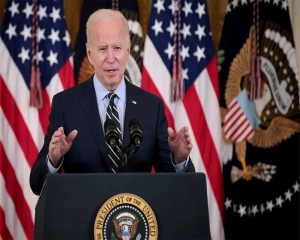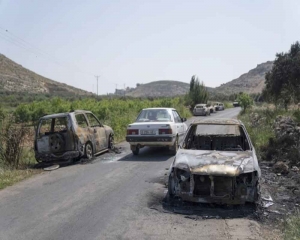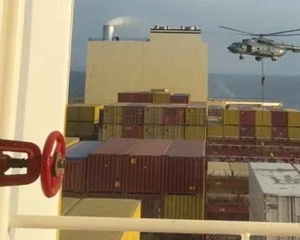Our steps for sustainable groundwater management are in the right direction and these are bringing a paradigm shift towards positive change
“Even as life cannot sustain without water, virtue too depends ultimately on the rain”-Tiruvalluvar. Rain, when infiltrates the earth's surface and reaches the water table, becomes groundwater. Anthropogenic activities coupled with climate change had resulted in unabated exploitation and rapid decline in groundwater levels in some parts of the country over the past few decades. It led to the realisation of the need to effectively quantify and manage this finite & invisible natural resource.
In 1982, the Government of India constituted the ‘Ground Water Estimation Committee’ (GEC) drawing members from various States / Central organizations engaged in hydrogeological studies and groundwater development. The Committee submitted its recommendations in the year 1984 and suggested a methodology for the assessment of dynamic groundwater resources, which is commonly referred to as GEC 1984. The methodology underwent comprehensive revisions in 1997 and 2015. GEC 2015 is being followed for the assessment of groundwater resources from 2017 onwards. Assessment exercise is done at periodical intervals jointly by State Ground Water Departments and Central Ground Water Board under the guidance of the respective State Level Committee on Ground Water Assessment.
In the year 2017, 24.21 lakh sq km mappable area was assessed for groundwater. The total area was divided into 6,881 assessment units. Annual groundwater recharge was estimated to be 431.86 Billion Cubic Meters (BCM) while the extractable groundwater resource, after accounting for base flow, was 392.70 BCM. Annual groundwater extraction stood at 248.69 BCM. The stage of groundwater extraction (percentage annual groundwater extraction to annual extractable groundwater resource) was 63.33%. Although the stage of groundwater extraction was within the safe limit (<70%), there were high spatial variations. 4,310 (62.64%) assessment units were in the safe category while 1,186 (17.24%) assessment units were in the overexploited category, extracting annual groundwater resources more than the annual groundwater recharge and with declining water level trends.
In this scenario, the Hon’ble Prime Minister decided to form the Ministry of Jal Shakti in 2019 by amalgamating the Department of Water Resources and the Department of Drinking Water & Sanitation for better coordination, regulation and management of water resources of the country. Special focus was accorded to the groundwater sector. Government schemes like Pradhan Mantri Krishi Sinchayi Yojana (PMKSY)-Per Drop More Crop component focused on enhancing water use efficiency in irrigation. Under the Har Khet Ko Pani component of PMKSY, the Repair, Renovation and Restoration (RRR) of water bodies was focused. The government of India launched Jal Shakti Abhiyan-I in 256 water-stressed districts of the country in 2019. Under the Jal Shakti Abhiyan senior officers, groundwater experts and scientists of the Government of India worked with State and district officials to promote water conservation and water resource management by focusing on accelerated implementation of five target interventions, viz., water conservation and rainwater harvesting, renovation of traditional and other water bodies/ tanks, reuse and recharge of bore wells, watershed development and intensive afforestation.
Atal Bhujal Yojana, a Central Sector Scheme, for sustainable groundwater management, with a focus on community participation, demand-side interventions and convergence with ongoing schemes, is being implemented in 8,221 water-stressed Gram Panchayats in 80 Districts of seven States – Gujarat, Haryana, Karnataka, Madhya Pradesh, Maharashtra, Rajasthan and Uttar Pradesh. The National Water Mission had started a campaign "SahiFa al" to nudge farmers in favour of crops that consume less water and use water more efficiently. To regulate and control groundwater extraction for commercial/ industrial purposes, The Jal Shakti Ministry has issued guidelines with pan-India applicability. The commercial entity, extracting groundwater, has to get the NOC from the Central Ground Water Authority.
Since water is a State subject, various State governments have also formulated and implemented their schemes to augment, conserve and utilize groundwater resources. Neeru Chettu–Andhra Pradesh, Jal Jeevan Hariyali Abhiyan–Bihar, Sujalam Sufalam Jal Sanchay Abhiyan–Gujrat, Mera Pani Meri Virasat Scheme–Hariyana, Jalyukt Shivar Abhiyan–Maharashtra, Paani Bachao Paisa Kamao Scheme– Punjab, Kudimaramathu Scheme– Tamilnadu and Mission Kakatiya-Telangana are few notable examples in this regard. To regulate the over-exploitation and consequent depletion of groundwater level, the Jal Shakti Ministry has circulated a Model Bill to all the States/UTs to enable them to enact suitable groundwater legislation, which includes the provision of rainwater harvesting. As of now, 36 States/UTs have adopted the rainwater harvesting provisions.
The results of active Government interventions and public participation started to reflect in the year 2020 and 2022 groundwater assessments. The total number of assessment units increased to 7,089 in 2022 from 6,881 in 2017. Annual groundwater recharge increased by 5.58 BCM to 437.44 BCM. The annual recharge from Tanks, Ponds and water conservation structures increased from 13.63 BCM in 2017 to 23.00 BCM in 2022. While annual extractable groundwater resources increased by 5.38 BCM to 398.08 BCM, annual extraction of groundwater declined by 9.53 BCM to 239.16 BCM. It shows that supply-side as well as demand-side interventions have started to improve groundwater scenarios in the country. In 2017, approximately 89% of groundwater extraction was for irrigation purposes which declined to 87% in 2022. The stage of groundwater extraction has improved to 60.08% from 63.33% in 2017. The number of safe assessment units increased to 4,780 (67.43%) from 4,310 (62.64%) while Over exploited assessment units declined to 1006 (14.19%) from 1,186 (17.24%) in 2017.
The groundwater resource assessment of 2022 has been completed in a record time of nearly 5 months (against 2-3 years) due to the introduction of innovative technology in the form of a software/ web-based application “India-Groundwater Resource Estimation System (IN-GRES)”. IN-GRES helped in the faster assessment of groundwater resources by automation and digital data analysis. Further, it has been decided by the Jal Shakti Ministry to make groundwater resource assessment as an annual exercise from the year 2023 which used to take place once in 3 years. A new Groundwater Estimation Committee has been formed to revise and update the methodology deployed in groundwater assessment.
The groundwater resource assessment reports of the years 2020 and 2022 have confirmed that our steps for sustainable groundwater management are in the right direction and bringing a paradigm shift towards positive change. These reports and results are the outcomes of cooperative federalism as enunciated by the Constitution of India. Source sustainability has emerged as complementary to water availability. We are committed to the UN SDG Goal - ensuring the availability and sustainable management of water for all.
(The author is Joint Secretary, Department of Water Resources, Ministry of Jal Shakti, Government of India)


























